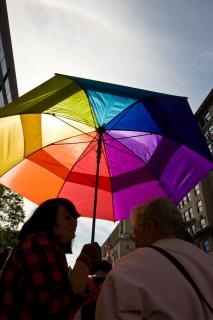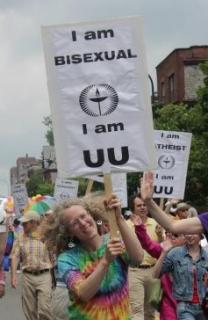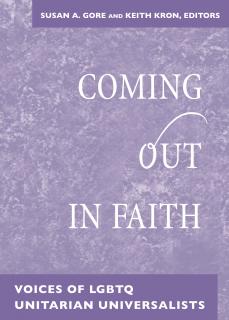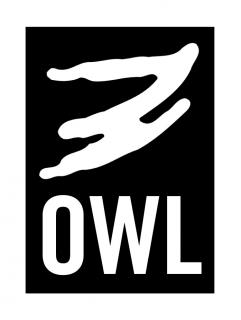Identity 101
We are a welcoming faith. Unitarian Universalism doesn’t just open its doors to people of all sexual orientations and gender identities—we value diversity of sexuality and gender and see this diversity as a profound spiritual gift.
"Finding the Right Words"
Language about sexual orientation and gender identity shifts and changes: new words are born; other words change meanings. Learning how different people use language to create meaning is important, as is using inclusive language ourselves. In conversation with many people and communities, we’ve developed some working definitions. Don't stop with these definitions, though--see the bottom of this page for next steps to deepn your understanding.
Basic Definitions
Sexual Orientation
We affirm the inherent worth and dignity of every person. Sexual orientation is a central part of who we are—being true to ourselves and honoring each other’s truth is a spiritual imperative.
Sexual orientation describes the pattern of a person’s sexual attractions based on gender. Sexual attraction and romantic attraction are often lumped together as if they are the same. That is not always the case. Affectional orientation describes the pattern of a person’s romantic attraction, or the gender of the people a person falls in love with or desires to partner with.
There are three basic types of sexual orientations: Monosexual, polysexual, and asexual.
Same-Sex Orientation
Some people are exclusively attracted to members of only one gender. Sexual orientation labels used by people of the same sex include:
- Gay: generally refers to a man who is attracted to men. Sometimes refers to all people who are attracted to people of the same sex; sometimes "homosexual" is used for this also, although this label is seen by many today as a medical term that should be retired from common use.
- Lesbian: a woman who is attracted to women. Sometimes also or alternately "same gender-loving woman" or "woman loving woman."
- Straight: a man who is exclusively attracted to women or a woman who is exclusively attracted to men; also sometimes generally used to refer to people whose sexualities are societally normative. Alternately referred to as “heterosexual.”
Polysexual Orientation
Some people are attracted to members of multiple genders. Sexual orientation labels used by polysexual people include:
- Bisexual: attracted to people of one's own gender and people of other gender(s). Often referred to as "bi." See Bisexuality 101 to learn more.
- Pansexual: attracted to people regardless of gender. Sometimes also or alternately "omnisexual."
- Queer: similar to pansexual, queer can be an identity label meaning that a person is attracted to people of many genders; however, queer is a multi-faceted word with more than one definition and use, and is viewed as offensive by some people. See Queer 101 to learn more.
Asexual Orientation
Some people do not experience sexual attraction. Most people this applies to identify as asexual.
- Asexual: not sexually attracted to anyone and/or not acting on attraction to anyone. Does not necessarily mean sexless. Asexual people sometimes do experience affectional (romantic) attraction.See Asexuality 101 to learn more.
In addition to the above, some people don’t like and don’t use labels. Other people identify as Questioning: a term used to describe someone who is unsure of or exploring their sexual orientation and/or gender identity.
Gender Identity and Expression
We affirm each person’s ability to judge for themselves who they are and express themselves in the way that is most authentic to their soul. We honor the diversity of truths that exists within our communities.
Gender is complex and multi-faceted. In North American culture several distinct facets of ourselves get lumped together when we talk about “gender”:
- Biological Sex: attributes such as anatomy, chromosomes, and hormones that is usually assigned at birth and inform whether a person is male, female, or intersex.
- Gender Identity: An individual’s internal sense of being a man, a woman, neither of these, both, and so on—it is one’s inner sense of being and one’s own understanding of how one relates to the gender binary. With the exception of agender people, who often do not have an internal sense of gender, most people have a gender identity.
- Gender Expression: the ways in which a person manifests masculinity, femininity, both, or neither through appearance, behavior, dress, speech patterns, preferences, and more.
The cultural expectation is that one’s biological sex, gender identity, and gender expression will align in stereotypical ways: that someone who is male will identify as a boy/man and have a masculine gender expression, for example. This expectation does not serve our diverse world and the myriad experiences of self that exist.
For more definitions about gender identity and expression, see Transgender 101. We also have resources for Queer and Trans Youth.
Going Deeper
Definitions can never encompass who we are as full human beings. The spiritual invitation is to cross divides of difference and take risks by authentically choosing to get to know one another. Labels can be tools of liberation or oppression—it’s all in how we use them. So don't stop with simply learning definitions. Here are three next steps for truly deepening your understanding.
- Explore your own sense of self: What do the definitions above bring up for you? What language do you use to describe your own sense of self?
- Talk to people you trust about sexual orientation and gender identity. Ask them respectfully what is true for them and talk about the things that confuse you or that you are curious about.
- Build relationships with people who have different sexual orientations and gender identities from your own. Be respectful of each person’s right to privacy by asking open-ended questions to learn more about how they experience the world.




